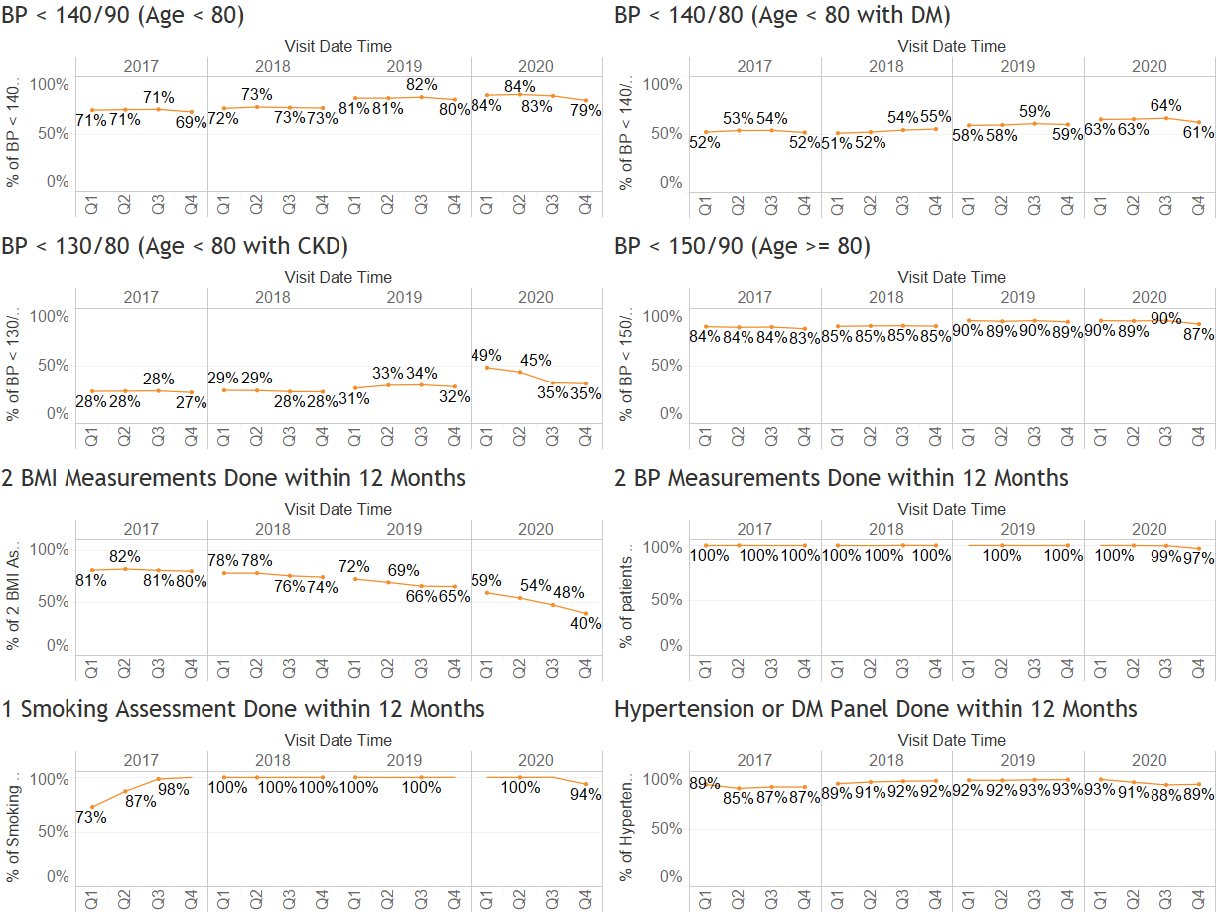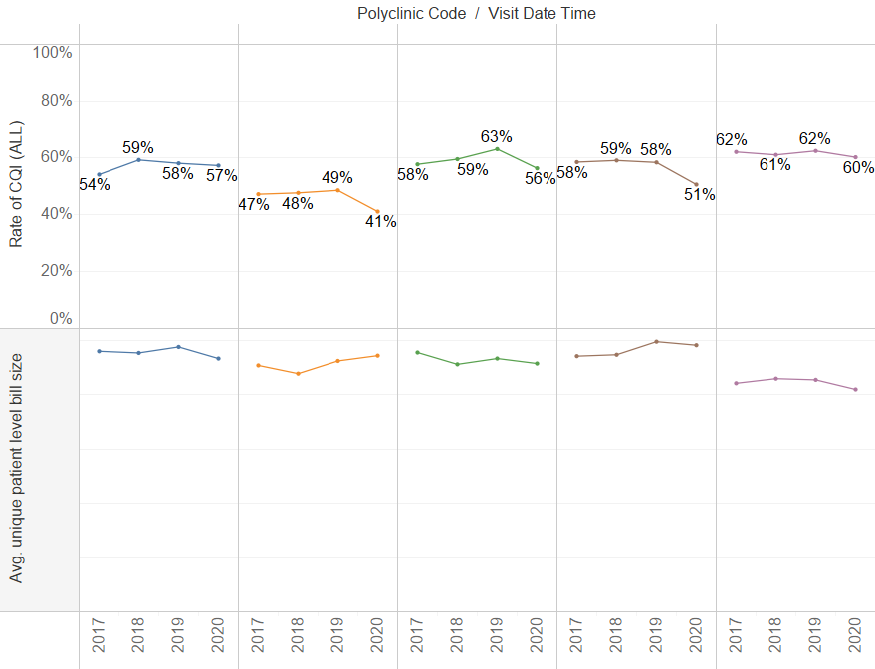Value-Based Care of Hypertensive Patients in National University Polyclinics (NUP)
Case study
Background
The National University Polyclinics (NUP) implemented value-driven outcomes (VDO) for hypertension in 2018. Hypertension is the second most common chronic condition seen in the polyclinics and is a risk factor for atherosclerotic cardiovascular disease and chronic kidney disease.
Objectives
- To use the value driven outcomes tool to identify care cost of managing patients with hypertension in our polyclinics.
- To identify variability in clinical quality and care costs among the polyclinics to support value improvement initiatives.
Methodology
We engaged family physicians at NUP with interest in hypertension management to be clinician leads for VDO hypertension. The VDO dashboard for hypertension was presented by a clinician lead at the quarterly clinic heads' meeting. Choa Chu Kang polyclinic was identified for improvement of value-based care.
Results
Choa Chu Kang polyclinic carried out a value improvement initiative in 2019 on blood pressure (BP) control of the different patient groups in accordance to clinical practice guidelines. The initiative included doctor education and reminders of blood pressure (BP) targets, documentation of BP in the electronic medical records, and the use of home BP monitoring for patients.
Clinical Quality Index

CQI Breakdown (2017 to 2020)

The proportion of patients with hypertension achieving the recommended blood pressure targets improved for all four groups: from 73% to 84 in the <140/90 mmHg group, 55% to 63% (<140/80 mmHg group), 28% to 49% (<130/80 mmHg group) and 85% to 90% (<150/90 mmHg group).
CQI vs Cost (2017 to 2020)

The annual cost of care increased from 5.5% on average per patient. There is an increase in CQI from 48% to 49% during the same period, and an apparent decrease in 2020 attributed to data interface issue for
the BMI measurement care component.
Conclusion
The value-driven outcomes dashboard is a useful tool to identify and to support value improvement of patients with hypertension at Choa Chu Kang polyclinic. Our dashboard showed the changes in CQI vs Cost with the value improvement activities, and includes breakdown of CQI to individual process and
outcome care components.